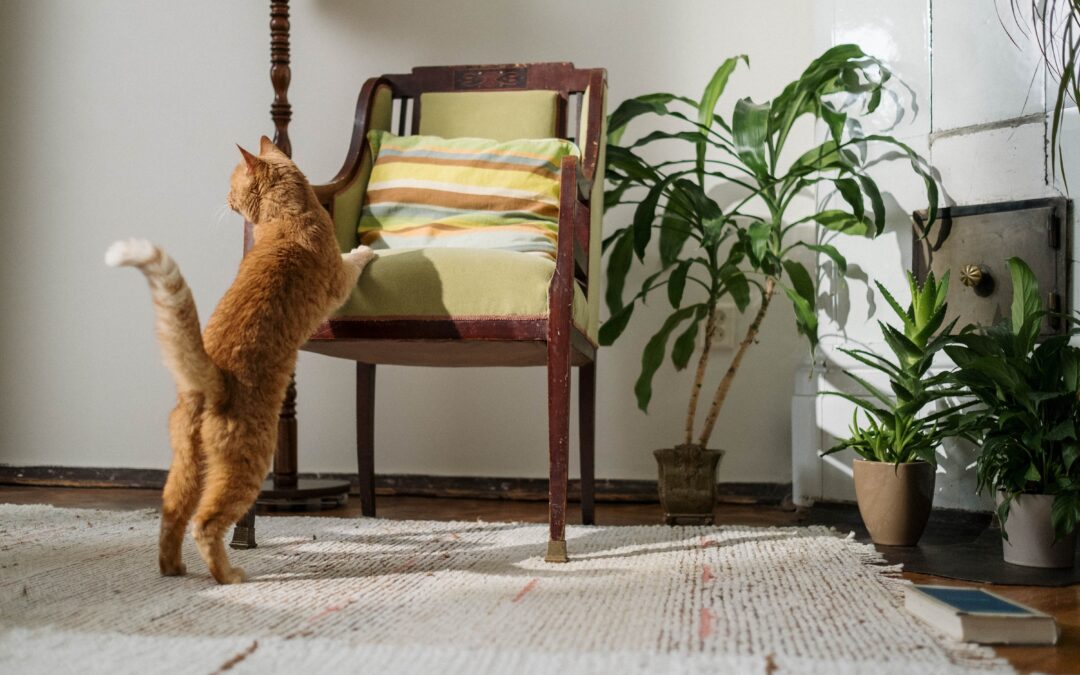A pet can be a treasured member of the family – but not all landlords are willing to let animal owners take on a tenancy.
According to the Pet Food Manufacturers’ Association, an estimated 40 per cent of UK households had a pet in 2019, from cats and dogs to ferrets and toads. And yet, according to the Government, only around seven per cent of landlords advertise accommodation as pet-friendly.
“For most tenants, a pet is part of the family,” says Dan Mould, Business Manager at three branches of Andrews estate agents in Bristol.
“Therefore, you would expect a landlord to fully consider the option to allow pets in the property. However, sometimes landlords do say no, which could be due to a point-blank refusal no, or it could be due to a previous bad experience.”
While some landlords fear having pets can cause damage and other issues, supporters argue that it can make their property more desirable and encourage their tenants to rent for longer.
And so what are the rules, and what can you do to get that home with creature comforts? OnTheMarket is here to help.
What you need to know about renting with pets
The Government recently announced that it is trying to encourage “more landlords to consider opening their doors to responsible pet owners” through its model tenancy agreement.
This is a contract that landlords can use when taking on new tenants in England. But the Residential Landlords Association has pointed out that the “initial action does not make it a legally binding requirement for landlords to accept pets, and that landlords still hold the right to refuse tenants with pets.”
According to Landlord Law Services, referring to the Equality Act 2010, “assistance dogs, such as guide dogs for the blind, hearing dogs for deaf people, and dogs for disabled people” must be permitted by law in a property.
Landlords are not allowed to charge a higher amount of tenancy deposit if a tenant has a pet. Up to six weeks’ rent (depending on the total annual rent) is the maximum deposit they can take.
That said, some landlords are said to be charging higher rent for pet-owners, according to ARLA Propertymark (Association of Residential Letting Agents).
Top tips for renting with pets
1. Find houses and flats with pets allowed
Before you start with a tenancy you need to find a home with a landlord who allows the type of pet you have. You should mention to your letting agent about your pet, or pets, and they can help find you find some options – see below for more on this.
You also need to find a home that is appropriate for your pet – for example, somewhere with enough space for a dog (ideally including a garden) or with cat flaps for a cat.
2. A letting agent can help make arrangements for your pet
While pets such as fish, rabbits and hamsters are generally accepted by landlords, Dan Mould says cats and dogs might need greater negotiation. An agent, he says, can be a key intermediary between prospective tenant and landlord “as they are able to advise from both sides.”
“When speaking with perspective tenants we always find out their property requirements, whether this includes a pet or not, and discuss their situation,” says Dan.
Read more
– How to make money from your spare room
– Simple ways for tenants to save money in their home
– How to make a rental house a home: Five top tips
“If this does include a pet then we will always have an honest and open conversation with the landlord as to whether this is an option.”
He adds: “We advise both parties to consider where the other is coming from. A landlord may have had a previous bad experience and naturally be hesitant, however a tenant may see their pet as their priority.”
3. Get a reference for your pet
A positive experience with another landlord can support a tenant’s application. Dan says something they have found works well is a letter of recommendation from an existing landlord.
Rehoming and rescue charity Dogs Trust agrees, saying: “By providing a reference from your previous landlord, you can show that your pet is well behaved and has caused no problems at your previous property.
“This will demonstrate that you are a responsible pet owner.”
4. Meet the landlord in person
If your application progresses, Dan says, it’s worth arranging for you and your pet to meet the landlord. That way, he adds, any concerns they have can be ‘laid to rest’.
Dogs Trust advice includes inviting the landlord to your current home so they can witness first-hand how you and your pet live. The charity adds: “This is particularly important for dogs as it’s an opportunity to show your dog is well behaved.”
5. Write a pet CV
Dogs Trust suggests giving a landlord the lowdown on your pooch or cat.
It says: “Include the contact details of your veterinary practice and someone who can care for your pet in an emergency. You could also include details of your pet’s last vaccinations and any flea and worming treatments they have had.”
6. Don’t try and conceal your pet from your landlord
Before you try and pull the wool over a landlord’s eyes and smuggle in your beloved pet, pause for thought.
“You should always obtain consent before keeping a pet at your rented property,” says Tessa Shepperson, a solicitor specialising in landlord and tenant law.
“If you keep an unauthorised pet this would technically put you at risk of eviction. Plus, your landlord is unlikely to give a good reference, which could prejudice your chances of finding rented accommodation later.”
7. Get the authorisation to have a pet in writing
If a landlord agrees to rent to you, make your agreement official. Also ask for your tenancy agreement to be changed to include the fact. A landlord can charge a fee for this.
According to government guidance, this should not be more than £50. If a landlord asks for more, they need to provide “written evidence in the form of receipts or invoices to demonstrate that the amount charged does not exceed reasonable costs.”
You can find more tips on finding a home for you and your pet from Dogs Trust’s dedicated website. Meanwhile, if you are selling your home, and you have a pet, read OnTheMarket’s top tips, from removing litter boxes to making your pet the star of the photos.






